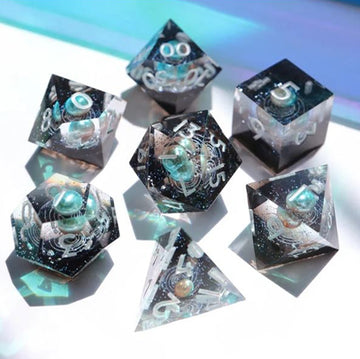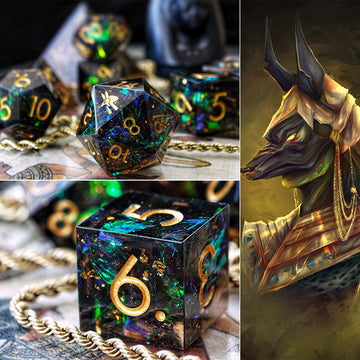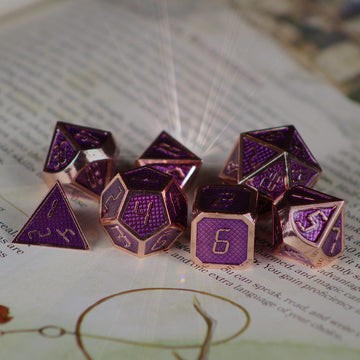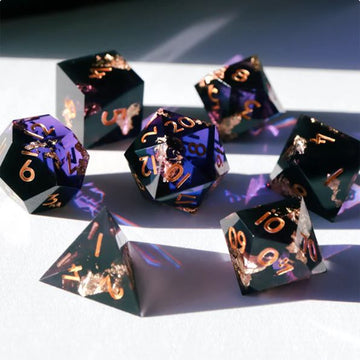The 4-Step "DnD Elevator Pitch"
For When You Only Have a Few Minutes to Convince Someone to Give TTRPGs a Try
By Riley Rath
Unless you run in the nerdiest of circles, there are people you know who do not play Dungeons and Dragons (or any other TTRPG for that matter).
And when those people find out you play D&D, some are going to ask any of the following questions:
1. "What IS Dungeons and Dragons anyways?"
2. "Like... how do you play DnD?"
3. "What is playing DnD like?"
These are the moments veteran players live for.
(Especially if they are itching to start a new campaign and are desperate for fresh blood).
And of course, you COULD answer them by going into a long, rambling answer that covers every facet and nuance of the game. Or you could pull them aside, effectively sitting them down by the fireside for a tall tale of your evil-destroying escapades...
But odds are that you do not have that much time.
More often than not, you won't have the time or place where you can getup on your soapbox and preach the TTRPG gospel to the heathen masses. It is more likely that you're:
- At a party...
- At a brewery...
- Out to dinner with a couple and the other spouse doesn't care...
- Waiting for an Uber...
- Catching your breath in-between sets at the gym...
Regardless of the situation, you probably have only 2 minutes tops to get their attention, spark their curiosity, and convince them to give DnD a try.
You gatta have a DnD elevator pitch.
The phrase "elevator pitch" came from salesmen and entrepreneurs who would manage to catch a CEO or other decision-maker in an elevator and only have the time it takes the elevator to reach their floor to convince said decision-maker to take on a business or meeting.
Usually, it contains some sort of condensed story, an explanation, a promise, and a not-intimidating offer that makes it hard for the other person to say "no." And it has to tug on their emotions... not just explain the facts.
And I want to share with y'all MY elevator pitch.
It comes in four segments: 1) introducing the novelty, 2) explaining the core, 3) removing obstacles, and 4) offering to play.

1. Introduce the Novelty
Once any curious question has been asked, I begin by explaining that, in the history of mankind, there have basically been only 4 different types of storytelling: oral, written, visual (illustrated/filmed), and performed.
However, in the 1970s a new form of storytelling was invented: cooperative storytelling. And this was transformative for two reasons:
1. As a player, you are both the author and the recipient. You tell the story AND experience the story.
2. You tell it with others who are also both authors and recipients.
(You could include video games as a form of storytelling as well, which would make TTRPGs the sixth type).
But regardless, the point you are trying to make is that not only do humans LOVE stories, but there are really only a handful of ways to tell them. And that whoever you are talking to is missing out on something revolutionary by not playing.
In my opinion, it is a surprising, interesting, and intriguing way to grab their attention. Much more effective than just talking about the latest combat encounter.
2) Explaining Its Core
I then quickly transition into why this matters; why should they care about this new form of storytelling?
And the answer is simple: in cooperative storytelling, you... the author/player... experience cooperative stories in a way that is different from other stories.
Specifically, the adventures you PLAY become memories you EXPERIENCED.
This is definitely going to be weird to them, so provide an example from your campaign. I usually talk about a red dragon we fought, where a wall of fire separated one member of the party from the others.
I explain: "DURING THE SESSION... I'm saying things like, 'Ok, so my fighter runs up, leaps up a rock, and then swings his sword at the dragon's wing.' But later that night, when I think about the session, I think of it as: 'That was so cool when I ran up... and I leapt off the rock... and I swung my sword!'"
In cooperative storytelling, the imaginative gameplay becomes memories.
The purpose of this is to kinda blow their mind a bit as you explain the "magic" begin this type of storytelling. They do not just hear about a hero or relate to one... they ARE the hero.
And since everyone wants to be a hero (after all, the "hero's journey" has universal appeal), you are finding and nurturing that desire within them. For perhaps the first time in their lives, an opportunity to be a hero has presented itself, and they are tempted to take it...

3) Removing Obstacles
But even if they are with you so far, many people are going to run into a roadblock that would prevent them from ever giving TTRPGs a try. Because, believe it or not...
Some people hate fantasy.
Like, really hate it. They don't get it. It annoys them. It's dumb or geeky or pointless or weird or whatever.
Pete Holmes has a great bit on Conan saying how he can't watch Game of Thrones because he doesn't like stories with "realms."
You see, THIS is why "OMG it's too cool, you can be a barbarian and kill dragons!" is NOT the best way to start your "DnD elevator pitch." Not only is the focus on YOUR experience rather than what could be THEIRS, you run the risk of needlessly turning your audience off before you have even started.
Now if you have gauged or know that they love fantasy, now is the time to mention it and explain how they can be Aragorn or Dumbledore or whatever. But if not...
Relieve them of their fears.
I know anyone reading this blog post likes fantasy, but it's not like fantasy has the sole and exclusive claim to TTRPGs. The person you are talking to can play a cowboy TTRPG, or a Victorian TTRPG, or a WW11 TTRPG. You can do a TTRPG where they are just kids biking around a hometown.
Hell, I'm 99% sure you could run a 2 year campaign just for Swifties, featuring adventuring through her eras and defeating Jake Gyllenhaal and Kanye West.
The point is this: if fantasy is the reason they are hesitant to play TTRPGs, offer something else. If time commitment is the problem, offer a one shot. If they want to play with friends, ask them to get some together and you'll run a session or two.

4) Offering to Play
Finally, instead of just making promises to them about what it will be like...
Show them what it's like.
Debroah Ann Woll demonstrates this PERFECTLY during a podcast with Joe Bernthal. He expresses that he has heard about the game but doesn't really understand it or get it. And she just says:
"Do you wanna play? Like, right now?"
She goes on to A) create a scene, B) place him in the scene, and C) present a conflict. She then asks him what he wants to do. He is confused at first, but his intuition quickly takes over, and he starts making decisions, which she narrates.
No dice. No rules. No character sheet. None of that is essential and important right now. Your goal is to GRIP them; to capture their imagination, have something click, and they experience an "aha!" moment.
You want them to GET IT. Maybe they will play again, maybe they won't. But at least they will comprehend what makes TTRPGs different from others and walk away with some level of respect for it.
Conclusion
Once you have done aaaaaall that... and they are still engaged and interested... THEN you should feel free to geek out about your character and campaign all you want!
Talk about your character's backstory, or that one NPC that was hilarious, or the time y'all ALMOST were TPK'd. Whatever excites YOU the most, share it, because now is the time to share that excitement and get them hyped for what lies ahead.






